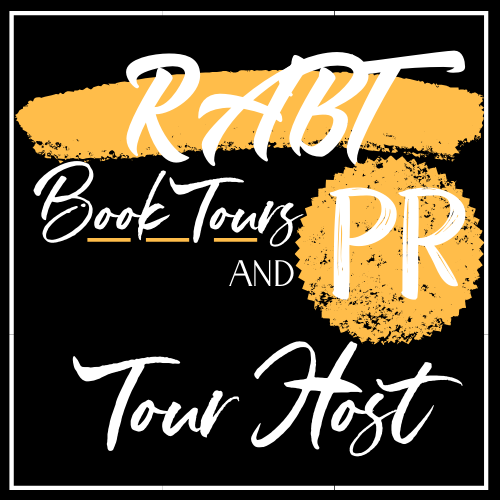The Bungalow Heaven Mystery Series Book 2
Mystery
Date Published: July 21, 2022
Publisher: Jan-Carol Publishing, Inc.
In Canyon of Shame, the second part of The Bungalow Heaven Mystery Series, detective Peter McGinnis from the Pasadena homicide unit has to solve the murder of a forty-year-old woman whose body was discovered in Eaton Canyon. What at first appears like a routine investigation, turns into a career and reputation salvaging operation for the detective, who is not only the main witness in a prominent Black Lives Matter case, but who becomes more and more entwined with the case the more facts he uncovers.
Interview with Faye Duncan
How many books have you written and which is your favorite?
I have written two books and about three short stories. My favorite one is probably the short story Palavra Elemental and my current novel of course, Canyon of Shame.
If you’re planning a sequel, can you share a tiny bit about your plans for it?
Yes. Part three of The Bungalow Heaven Mystery Series will be called “The Emerald Necklace.” The over-arching theme of this book will be the very complex and life-sustaining Los Angeles water management, and how the historic water wars of the 1920ties affected the Native American population. However, there is also a deeper core to this story, and this will be a complicated mother-daughter relationship. Contrary to the previous story, this novel will be exploring a mix of first person and third person omniscient POVs because I feel that the female characters in this story will need a stronger voice than they have had in my novels so far.
Do you want each book to stand on its own, or are you trying to build a body of work with connections between each book?
The goal, of course, is to have a body of work that is connected. However, since I am still very much of an indie author and I don’t have a huge audience, I feel entitled to some more exploring in each part of this series than would be permissible under other circumstances. There is a benefit to every situation. I am hoping, of course, that these experiments will appeal to a larger audience at some point and ultimately make me a better writer.
How did you come up with the title for your book?
The title Canyon of Shame resulted in an encounter with someone I had in the Little Santa Anita Canyon in Sierra Madre where part of the story takes place and one of the suspects lives. It was very much as the character Dr. Farzem describes it in the book...people do things that would maybe offend you if they were aware that you are watching, but they aren’t...in my case, a guy was unaware that I was walking my dogs nearby, and he was rummaging through the trunk of his car and then suddenly said some really bad words. When he became aware that I was passing with my dogs, he made this very comical apology. I wasn’t even offended by anything that he said, I thought it was perfectly natural. But his response to my presence was striking and I never forgot it. I thought it must be characteristic of the way of life in that canyon, where the houses are literally like cardboard boxes glued next to each other, and you can hear everything. The canyon itself is a gorgeous place amidst a creek and a lot of wildlife. So, I perfectly understand why people would chose to live up there. But as said, it is very narrow and small, so that may not be the right place for everyone.
How long did it take you to write this book?
About five years. Much too long, I know. But I was in graduate school, and working part-time, and I am a single mom. So it was difficult to find time to do everything, especially since my writing was more focused on academic papers at the time.
What does the title mean?
I think I have explained the literal meaning of the title. The figurative meaning alludes to the theme of racism, and how it continues to happen, but people either pretend not to see it or look away in shame. Sometimes we are even racist without knowing what we are doing, simply because we are white (or of some other race) and stupid. Canyon of Shame stands for racism that continues to happen directly under our eyes.
What did you learn when writing the book?
There is no good story without a deeper meaning. Some of us (I think a lot of us, especially commercial movie producers and such), come up with these ideas about what kind of a story we want to write. I always knew who my victim was and who the people were that surrounded her, and how she was connected to McGinnis. But I was stuck in this novel for a long time because I couldn’t’ figure out what this really was about. Why did it matter that I had a white cop at the police? It took the events around the George Floyd murder for me to make sense of my white cop character at the Pasadena Police, and how I could use him to ask the question: what would you do if you knew that your colleague was violent against a black person? What would I do? I don’t think we ask ourselves these questions enough when we watch the news on TV, or on our smartphones, or wherever. We don’t see how much courage it takes to say something, regardless of your skin color. I think most of us would still choose to remain silent rather than speak up, especially when you are in a work environment where opinions diverge.
What surprised you the most?
What surprises me the most is the reception of the very last chapter. Some people agree, but others disagree and say that my optimism may be offensive to the Black Lives Matters cause. I don’t know. I hope not. But it is a discussion that I would like to see continued, because it matters to me. I am hoping that I am putting a positive light on all this with my optimistic perspective, because I do believe in progress.
Have you ever killed off a character your readers loved?
I have, or rather, I am in the process of doing so and it was an extremely difficult decision. This is the sequel of an existing story (screenplay), which the original writer never was able to continue. I pretty much figured out why he couldn’t and have fixed that issue. But now, on a deeper level that I am working on the main character, I am seeing that she needs to grow. And the only way to get her to grow and not keep her in her perpetual “damsel in distress” mode is to kill off the love of her life who always rescued her. It’s the only way she can learn to fend for herself. This entirely changes the tone of the existing story, which until now was mainly known to be a romance. So, it is quite likely that a big chunk of the audience will have objections. I do count on those who won’t.
What do you do to get inside your character’s heads?
It depends on the character. If it is a woman with a biography that is similar to mine, all I need to do is listen to my inner voice. However, if I am writing a male character such as detective McGinnis, a lot more “work” is involved. First off, I study people who remind me of him. For instance, there is this horse racing podcast that I watch, where the commentator is like the spitting image of my McGinnis character. Paradoxically, this podcast guy calls himself “Sarge.” I love watching this guy because he confirms that who I am writing could be perfectly real...then, there is research. A lot of police procedural stuff. Cops talk in a certain way to each other all the while having their own little quirks. Getting this right is probably the most difficult part, and this remains to be a work in progress. Sometimes, I reach out to other professionals, writers, editors, and police enforcement people to get their opinions...then I write character backstories which I keep on file. These backstories change with time as well, but they are one of the most essential tools to help me have material, when otherwise there would be none. I recommend writing character backstories to every novel writer. It is the best tool to keep the words flowing and flowing convincingly.
About the Author
Faye Duncan is a writer from the San Gabriel Valley, California. She is the author of Murder on Wilson Street, the first part of The Bungalow Heaven Mystery Series. She has published several short stories and volunteers as a script reader for International Film Festivals. Faye has an undying passion for ballroom dancing and lives with her son Max and her two dogs, Sammie and Lamby
Contact Links
Purchase Links























.jpg)


%20By%20Daisy%20Belle.jpg)








































0 comments:
Post a Comment